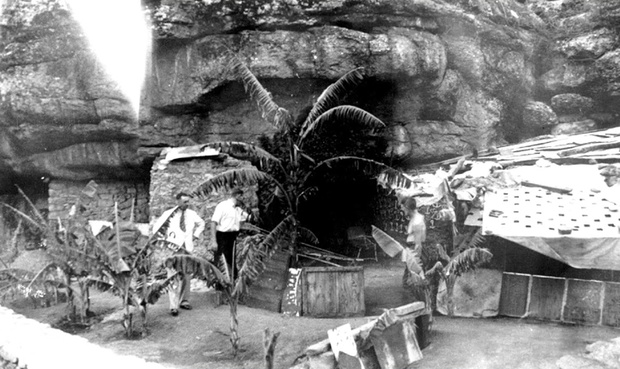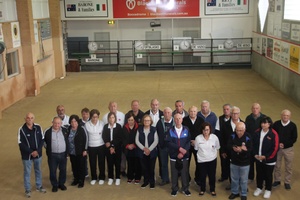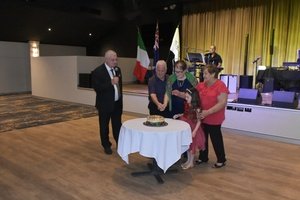Many visitors take the opportunity to wind their way up Scenic Hill, traversing steep rocky paths and derelict stone walls.
Hermit Cave, the stairs, the paths and the buildings scattered around were all built almost a century ago by Valerio Ricetti, an Italian labourer who lived on the hill by himself.
Unbeknownst to the people of Griffith, Ricetti lived on the hill, two kilometres from town, for many years.
Originally from Sondalo, in the region of Lombardy, Ricetti migrated to Australia when he came of age, pursuing his dreams for a better life.
However, while his Uncle Bortolo had made his fortune in among the opal mines and plots of land, his nephew Ricetti did not have the same fate.
The young man disembarked in Port Pirie by mistake and was robbed several times in both Adelaide and Melbourne, losing all of his belongings.
Ricetti crossed the Australian outback by train and on foot, stopping to work in Broken Hill with other Italian migrants.
Broken-hearted after a bout of unrequited love, Ricetti continued on to Griffith where, one night, he discovered what he called his “sacred hill” in 1929.
The hill had natural rock shelters and was surrounded by a fertile plain that had already been cultivated by other Italian migrants who flocked to Griffith.
Ricetti took refuge in a rock shelter during a storm and remained there for 10 years, creating his own earthly “garden of Eden” away from the rest of the world.
Using tools, objects, seeds and materials recovered from landfill, and moving at night so as not to be seen, Ricetti built a series of terraces into the hill, hand-producing thousands of bricks and sifting dirt to make it suitable for growing trees, fruit, edible and ornamental plants, such as roses and sweet peas.
He led a self-sufficient life, hunting rabbits and pigeons, growing grapes, peaches, figs, banana trees, lettuce and tomatoes that he kept alive with his rainwater tanks.
Ricetti also created a series of spaces with differing uses: a chapel, a house, a kitchen and a sort of amphitheatre, decorating them with floral and religious motifs, along with movie posters.
He even built a turret from which he surveyed his property and its surrounds.
His presence went undetected until 1935, when he broke his leg and had to attract the attention of a passer-by.
While Ricetti was in hospital his story became known to the community.
The council decided to assist in maintaining the area and people began to visit the cave.
A volunteer on Griffith’s tourism board, John Robinson, recalled his grandfather taking him to see the garden in the 1940s.
Ricetti did not always dislike having visitors but there would be times when he would not be seen for several days.
He was regarded as the town’s eccentric and when Italy entered the war, he was interned and regarded with suspicion.
At the end of WWII, he went to work for the Ceccato family, the compatriots he had met in Broken Hill, who had since moved to Griffith, and would visit Scenic Hill from time to time.
Ricetti died in 1952, in Italy, while visiting his brother, though he intended to return to his home on top of the hill.
Hermit’s Cave was added to the New South Wales State Heritage Register in 2007.












